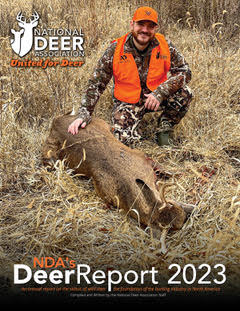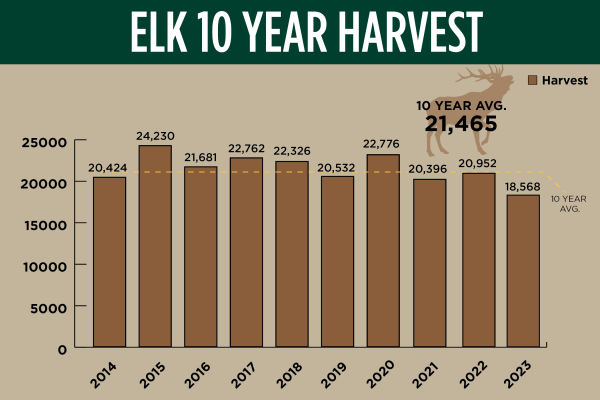Increase in Hunting Participation: Spike or Tradition?
By Glen Wunderlich
Charter Member Professional Media Association (POMA)
The National Deer Association (NDA) has published a compilation of whitetail deer-hunting statistics for hunting seasons through year 2021 across the nation; the most recent season’s data for year 2022 will be available next year. With Michigan’s new mandatory reporting requirements, a more detailed assessment is anticipated next year of how our state stacks up to 37 states in the Midwest, Northeast and Southeast.
Nationally, the antlered buck (those 1½ years or older) harvest is at a record level, and Michigan’s buck harvest was 6 percent above the previous 5-year average. The season was a record for hunters with the total buck harvest a whopping 3,041,544 which marked the first time it has surpassed 3 million adult bucks since 2009.
The top states for antlered buck harvest were Texas (449,933), Michigan (219,387), Pennsylvania (174,780), Wisconsin (158,236) and Missouri (40,855). Michigan’s buck harvest is some 4 percent higher than each of the two previous seasons.
Comparing these totals to available hunting land, Michigan has one of the highest amount of bucks taken per square mile: Interestingly, Michigan, Pennsylvania, and Delaware all came in at 3.9 bucks per square mile – twice the national average.
The top states with the greatest antlered buck harvest per 100 hunters are Mississippi (74), South Carolina (65), Louisiana (58), Texas (58), and Georgia (55). Michigan buck harvest totaled 39 bucks per 100 hunters.
One of the more noteworthy statistics relates to the age structure of bucks taken. Again, Michigan has not reported these figures in several years but had been one of the states taking a large percentage of yearling bucks – those 1 ½ years of age. Wisconsin hunters took 40 percent of its bucks as yearlings with Ohio, New York, Illinois, Maine, and New Hampshire close behind. Nationally, it is encouraging that hunters are allowing bucks to mature much more than in past years. Specifically, in year 1989 the tally of yearling bucks was 62 percent of the total kill, whereas in year 2020 the declining total has reached a scant 26 percent of all bucks taken.
On the other end of the scale are bucks of 3 ½ years of age or older taken. Again, Michigan has not submitted these statistics but has never been among the leaders in this category. Here are the nation’s top states in this regard shown as a percentage of total bucks taken: Oklahoma (83), Louisiana (82), Mississippi (79), Arkansas (76), and Texas (71).
The antlerless harvest numbers are important in helping to balance each state’s buck-to-doe ratio. Michigan’s antlerless take is a startling 25 percent higher than the previous two years at 191,252 or 3.4 per square mile; only Texas (402,515) and Pennsylvania (260,400) took more bald deer.
The sudden and significant increase in Michigan’s deer kill and that of other Midwestern states is no doubt a reflection of citizens’ new-found inclination to self-sufficiency courtesy of myriad governmental Covid-related dictates. Empty store shelves inspired Americans to find a way out – way out in the wilderness, or any facsimile thereof. Camping, fishing, hunting were all on the menu of first-time sportsmen and women. Supply lines would become the direct responsibility of multitudes of outdoors people – many of whom were discovering or rediscovering their roots through hunting and fishing. Some will have enjoyed the experience enough to carry on and only time will tell if the spike in participation morphs into tradition.






